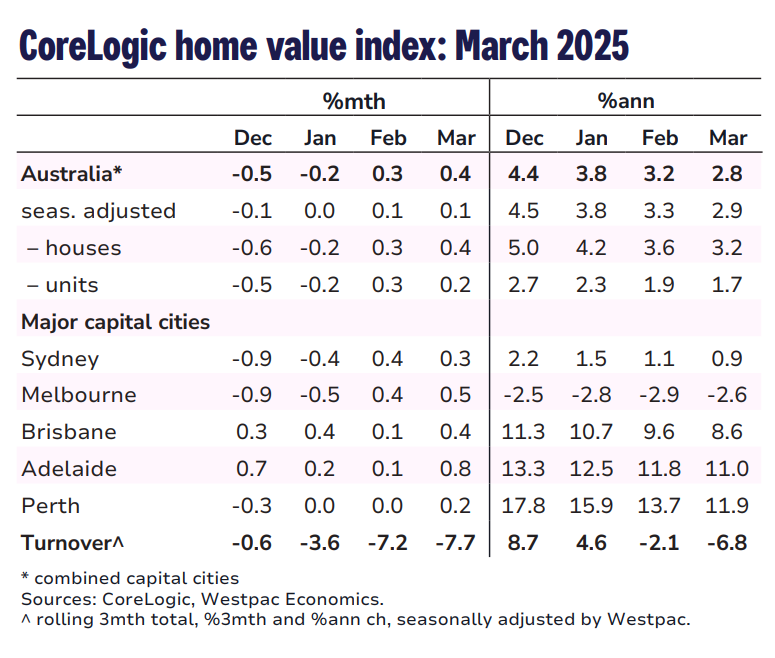

Australian home values have surged to record highs in March, marking a significant rebound after a brief period of decline.
According to CoreLogic’s national Home Value Index, property values increased by 0.4% over the month, showcasing growth across nearly all regions.
This growth is primarily attributed to improved market sentiment following the Reserve Bank’s February rate cut, which has also slightly enhanced borrowing capacities and mortgage serviceability.
The recovery in property values was broad-based, with every capital city except Hobart experiencing growth. Darwin led with a notable 1% gain, while Hobart saw a slight decline of 0.4%.
Tim Lawless (pictured left), research director at CoreLogic, which is soon to be renamed Cotality, emphasised the role of the rate cut in this turnaround.
“With the rate-cutting cycle expected to be drawn out, it will be interesting to see if this positive inflection in values can last in the face of affordability constraints,” Lawless said.
Sydney and Melbourne, which significantly influence the Home Value Index, both exhibited positive trends over the past two months.
Sydney’s values are now just 1.4% below their record high, despite a 2.2% drop between September 2024 and January 2025.
Melbourne’s values, while still 5.6% below their March 2022 peak, have risen by 0.9% in the recent months, suggesting a gradual recovery from a prolonged downturn.

Matthew Hassan (pictured right), head of Australian macro–forecasting at Westpac, provided insights aligning with CoreLogic’s findings.
Hassan remarked on the influence of the rate cut on both prices and auction activity, although he cautioned that the gains were somewhat moderated by seasonal adjustments.
“The RBA’s February rate cut has provided clear impetus to both prices and auction activity, although neither are particularly strong and both are being flattered a little by seasonality,” he said.
Looking ahead, while the interest rate decreases are supporting the housing market, various challenges such as affordability and slower population growth due to reduced overseas migration might limit the potential for rapid growth.
Rental values have also reached record highs, with the national rental index climbing further in March. Despite a slowdown in the pace of rental growth, the demand remains robust due to a significantly low national vacancy rate.
As the Australian property market navigates through the remaining months of 2025, the support from a moderate and gradual easing in monetary policy, alongside improvements in the cost of living and income growth, are expected to maintain positive momentum.
However, challenges like affordability and cautious housing credit policies are likely to keep the growth in check, ensuring a balanced market development.
“With the RBA moving through what is expected to be a gradual and moderate interest rate easing cycle, housing markets will continue to get doses of support through the rest of 2025,” Hassan said. “That should maintain positive momentum but may not be enough to stimulate an even stronger pick-up.”
Follow this link to read the full CoreLogic HVI report. Read the Westpac insights here.
